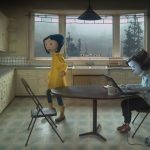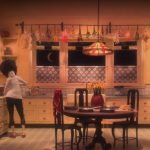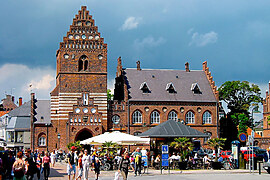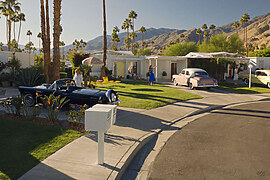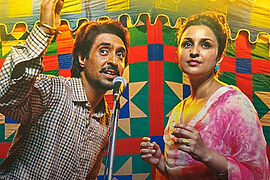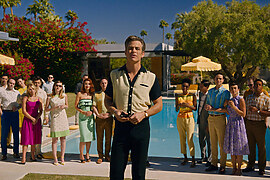Architecture has been used for storytelling in films since the beginning of cinema. This is because architecture is an integral part of human life as we spend most of our time around and inside buildings. Using architecture in the film as a way of narrating a story or setting a scene is a significant trick filmmakers use to make their films relatable, scenic, educational, and fun.
Throughout the years, architecture has found its way into theater, plays, films, and even modern stop-motion animations, not just as a frame filler but for creative narration. One such film that uses architecture as a way of successful storytelling is Coraline (2009) by Henry Selick, an animated dark fantasy horror film based on a book by Neil Gaiman. (contributors, n.d.) In this movie, a little girl bored with her life discovers a mysterious world that is exactly like hers but a million times better and happier. In this ‘Other world’, everything goes exactly how Coraline wants her life to be until it doesn’t. In this architectural review of Coraline, let us look at how architecture has been used smartly by the filmmakers of this movie to support the main story.
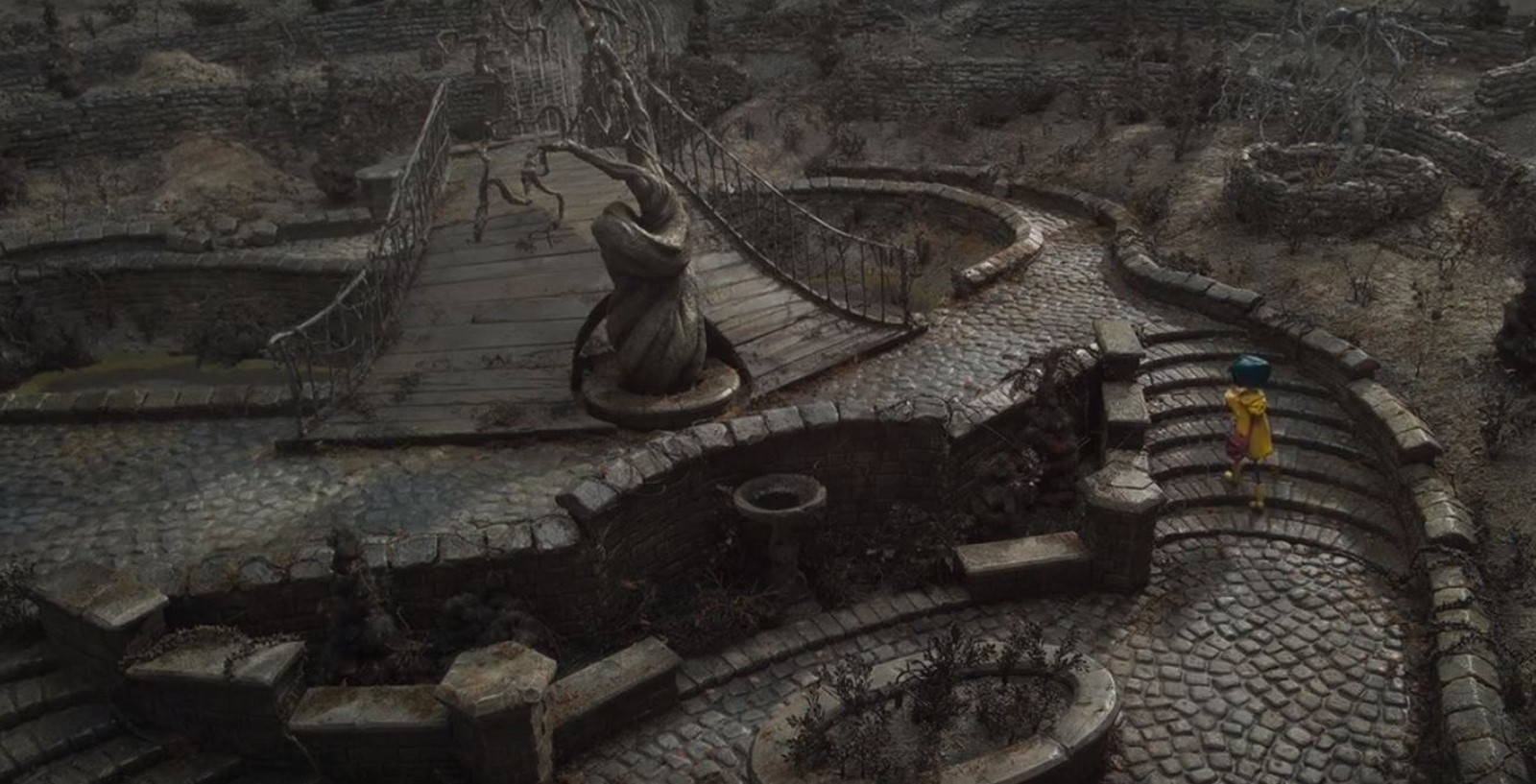
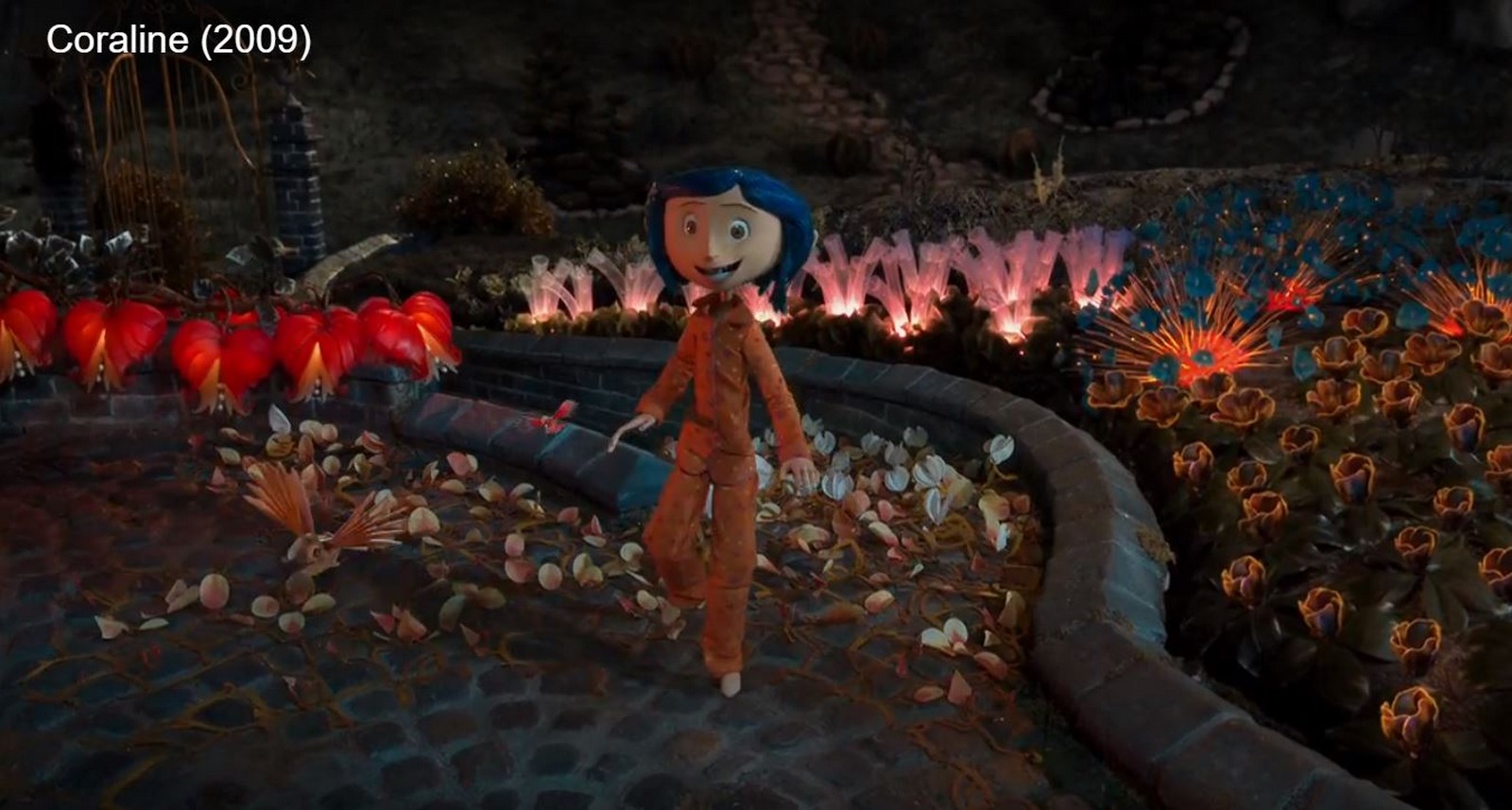
The movie starts with Coraline and her parents moving into a new house. From the movie’s beginning, you can almost taste Coraline’s displeasure on moving into this house. That displeasure is magnified by the visuals of drab and dreary landscaping at the front of her new house. The house is a pink Edwardian house with chipped paint and a dull exterior. This house in the film has recently been separated into flats, and the one next to Coraline’s is empty. (Dahl, 2018)Using this period house in such a condition puts the audience in the mindset that the house is ancient and the story is set somewhere after the 1910s.
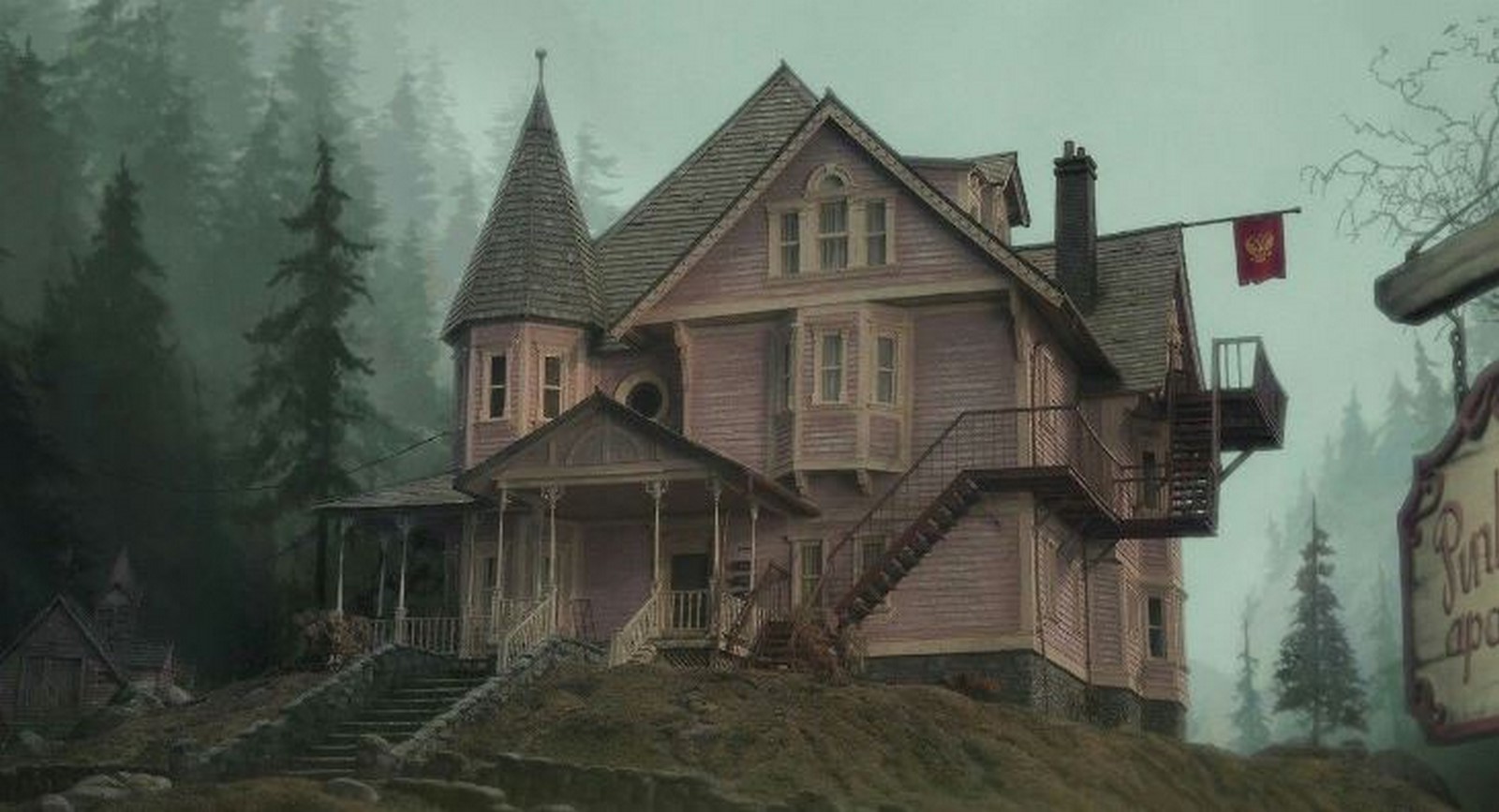
Symbolism through Architecture
As the movie progresses, you can see that the interior architecture of the house matches the drab exterior and needs to be updated and maintained. The director uses bland colours and bad angles to highlight how old and unkempt the house is. The lighting is also kept simple and dull, like everything else in the house.
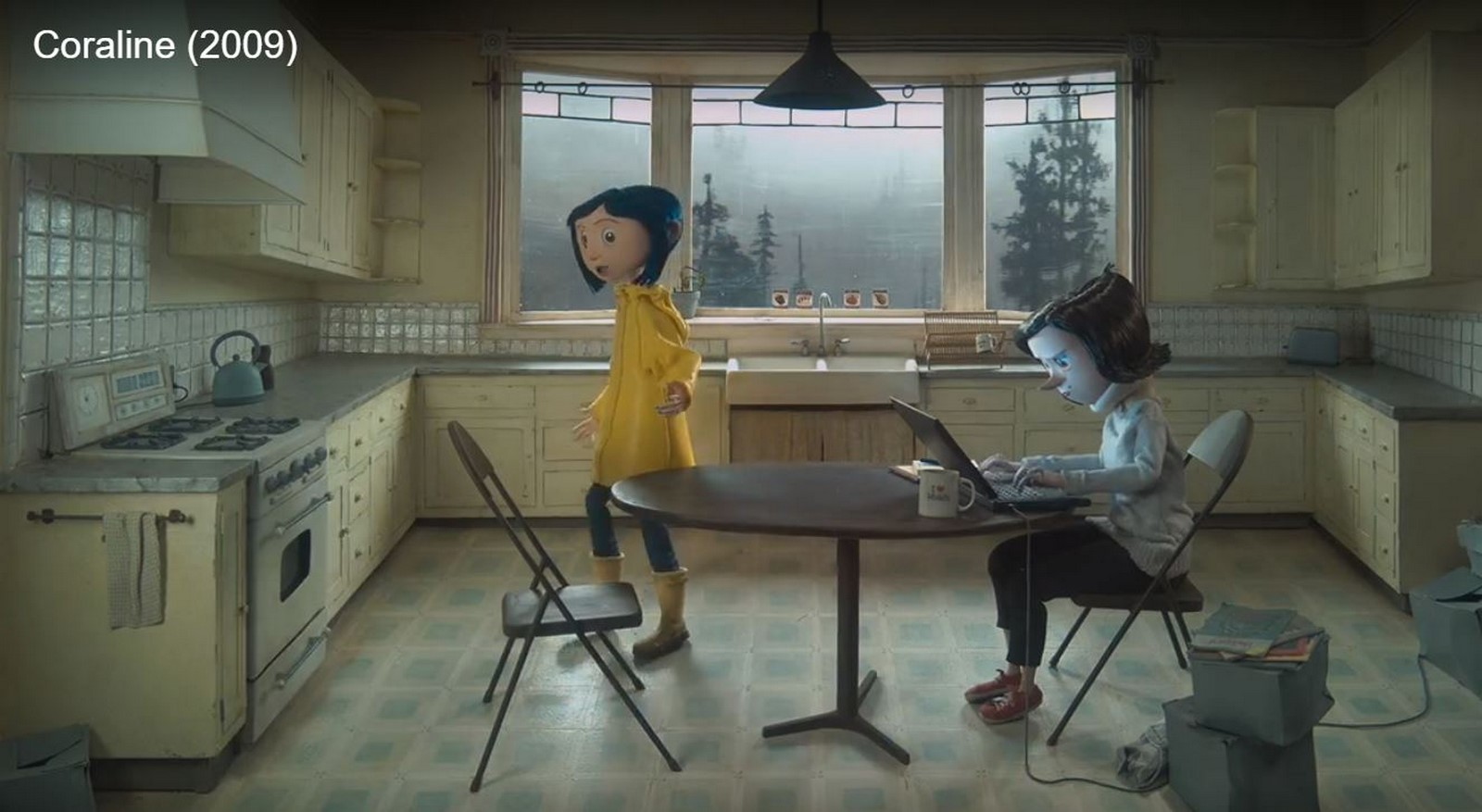
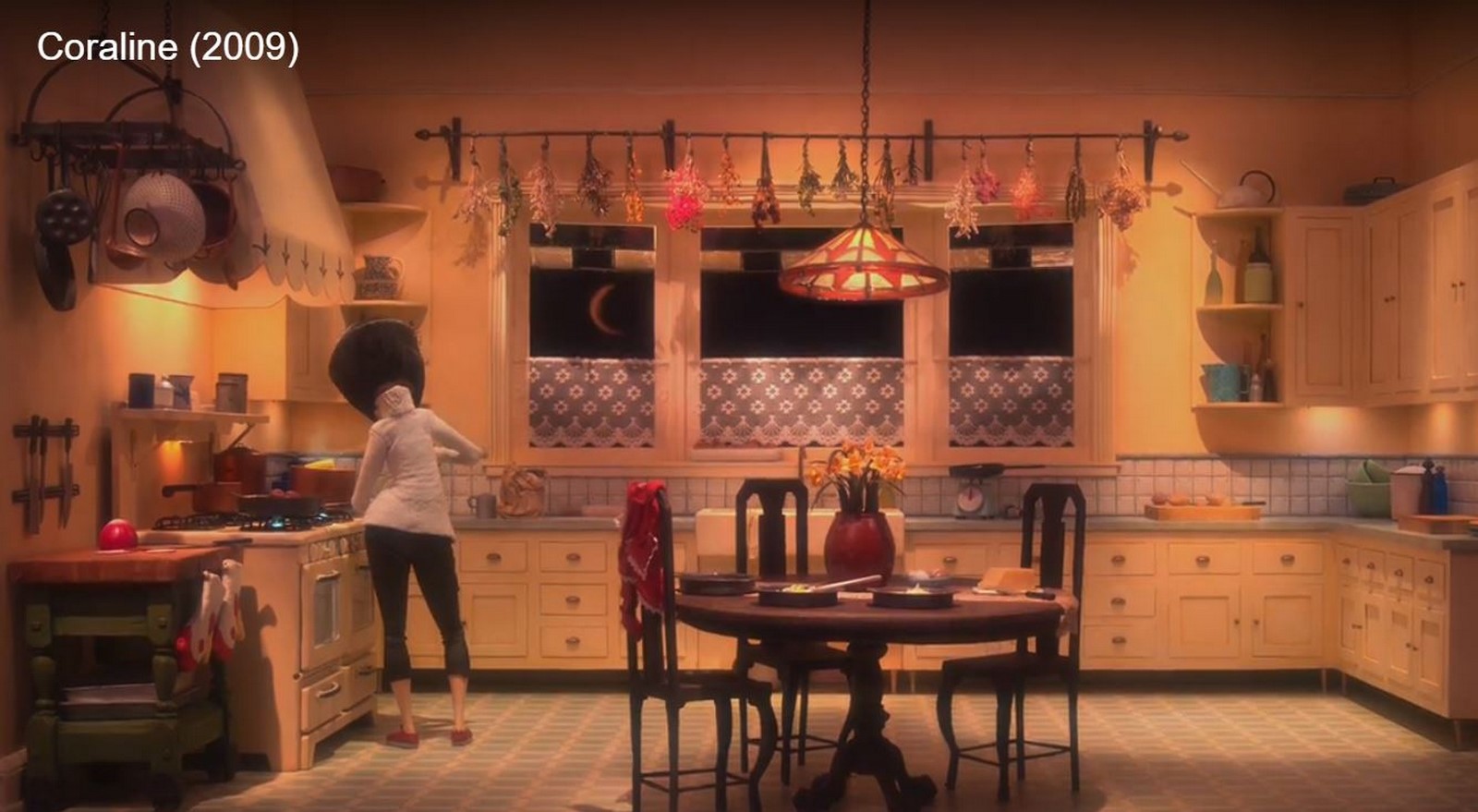
The fact that this house is depicted as old also plays with the dark and mysterious theme of the movie. A house as big and old as Coraline’s, with only three people living in it, two of which work, makes the house experience cold, lonely and creepy. These feelings are reciprocated by Coraline, which is why she goes snooping around her house. This snooping leads her to a mysterious square door in a spare bedroom of her house. Little does she know this door will soon change how she perceives her life.
According to the director of the movie Henry Selick, everything from the trees to the bedspread and the tiniest detail on the staircase wall is intentional, symbolic, and contributes to the story. (Minnick, 2009) The use of architecture in this film as a symbol is poignant and can be observed through every frame of the movie.
The symbolism can be better observed when Coraline finally opens that mysterious door one night and discovers a wacky new world just like her own back home but better. In this Other World, the colours are brighter, the house is cleaner, her bedroom is shinier, and her parents are happier. Everything that Coraline perceives as wrong, dull, and sad in her real world is the exact opposite in this wacko new world. Everything from her parents to her neighbours, her clothes to her bedroom, and even her friends are better in this world. This Other World is made to look happier than the real world through colour, light, angles, and architecture.
The Other World
The Other World Coraline discovers through the weird square door in her room is the world of imagination or horror; you couldn’t tell. The bright and shiny exterior of everything in this world was made to make us feel better in this world, undoubtingly wanting Coraline to stay there forever. The glitz and glamour of that world started from her Other Parents paying attention to Coraline (like she desired in her real world) and giving her everything she wanted.
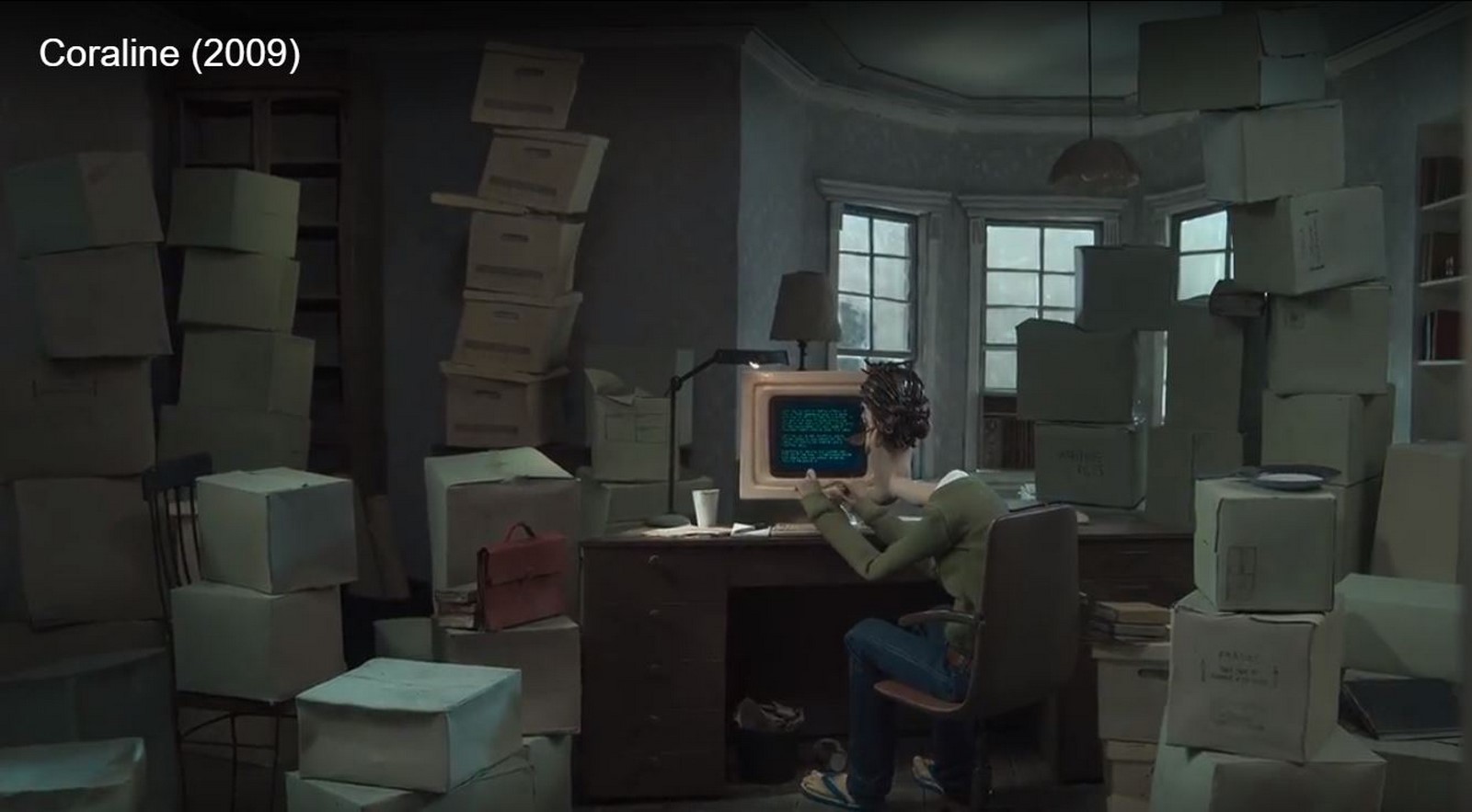
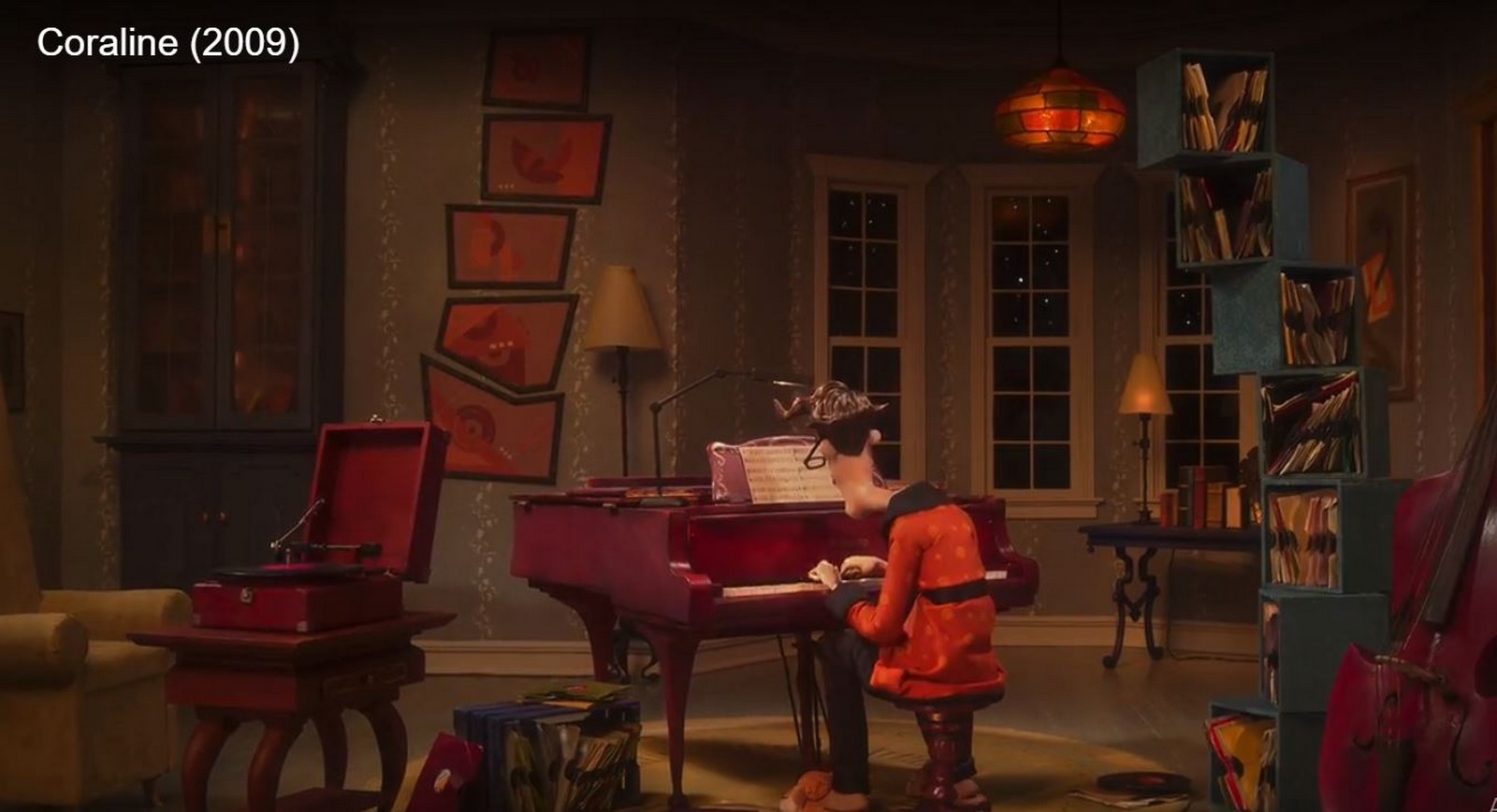
It is clear from the happiness on Coraline’s face and the change in her surly demeanour how much this attention and love she enjoyed. Unconsciously, the Other World is a projection of Coraline’s insecurities and her needs which is why everything that she is deprived of in the real world she gets in the Other World.
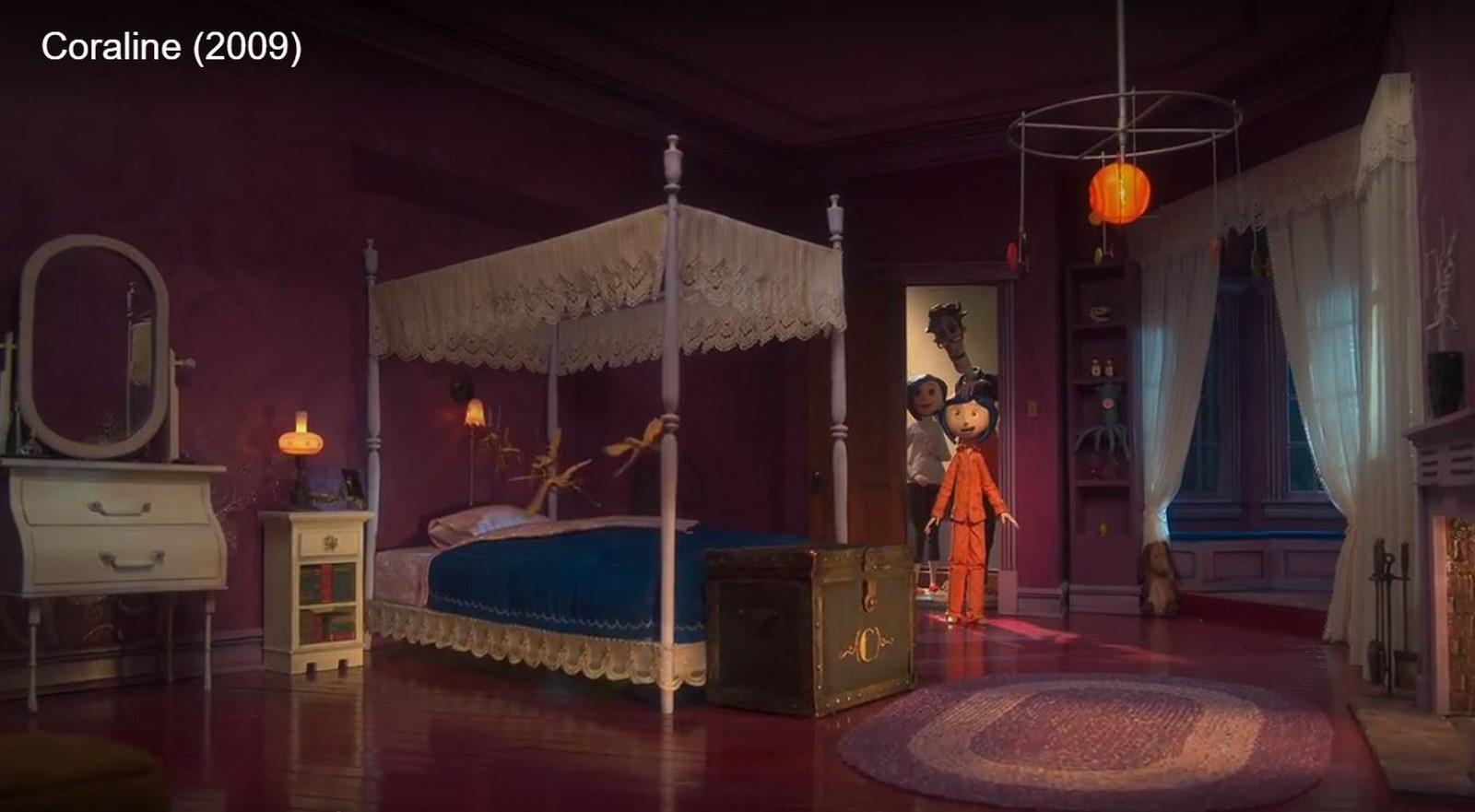
A direct quote from the book by Neil Gaiman gives us an insight into this thought:
“[The other mother] picked Coraline up, just as Coraline’s real mother had when Coraline was much younger, cradling the half-sleeping child as if she were a baby.
The other mother carried Coraline into the kitchen and put her down very gently on the countertop.
Coraline struggled to wake herself up, conscious only of having been cuddled and loved, and wanting more of it, then realizing where she was and who she was with.” (Tanner, 2019)
However, when Coraline is plunged into the reality of this twisted alternate version of her actual house, all the sinister advances and acts of this Other Mother become more evident to her, and she starts resenting the Other World and refuses to be fooled by a cheap imitation of the place she calls home. This theme of ‘home’ is challenged in this part of the movie, and the writer questions what home means. The architecture in which you live isn’t called home; instead, a home is a feeling you cultivate by building relationships and forming memories. (Tanner, 2019) And when Coraline finally accepts the reality of this Other World, the architecture and the basic structure of the world start shaking around her, instilling in her the belief that the Other World was nothing but a cheap imitation meant to trap her for eternity.

As the movie ends, Coraline, who has been through a terrible and terrifying journey back home, appreciates her surroundings, hugs her real parents, and has a newfound love for the idea of a home. This journey to the Other World has taken the fear of being herself out of her, and she opens herself up to her surroundings to make her real house a proper home. By the end of the movie, the architecture in the real world again takes on a symbolic role showing that beauty truly is subjective and gives an important message that the same chipped pink house, when seen with love and excitement, will look like home.
References:
Contributors, W., n.d. Coraline (film). [Online]
Available at: https://en.wikipedia.org/wiki/Coraline_(film)
Dahl, E., 2018. What is the setting of Coraline by Neil Gaiman? [Online]
Available at: https://www.enotes.com/homework-help/what-setting-coraline-439565
[Accessed 26 July 2023].
Minnick, R., 2009. Henry Selick Talks ‘Coraline’. [Online]
Available at: https://www.cbr.com/henry-selick-talks-coraline/
[Accessed 26 July 2023].
Tanner, A., 2019. Coraline by Neil Gaiman. [Online]
Available at: https://www.litcharts.com/lit/coraline/quotes
[Accessed 26 July 2023].











